Samsung Galaxy S7 Edge vs Galaxy S7
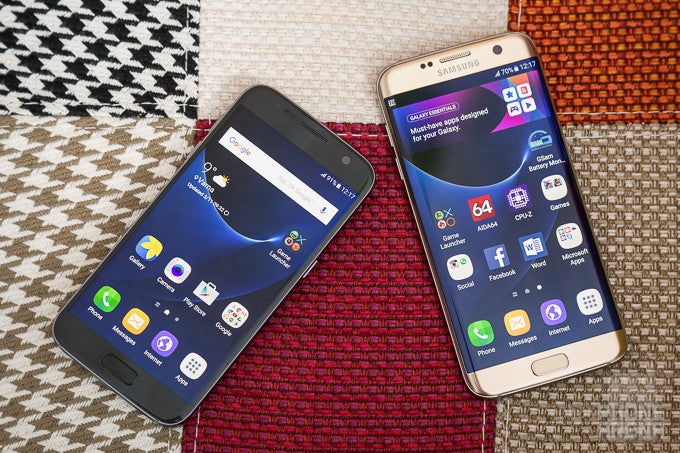
Introduction
Just like last year, in 2016 Samsung brings out not just one, but two new flagship-phones: the flat-screened Galaxy S7 and the curved S7 edge, which has a bigger screen this time around.
The two are practically identical when you look under the hood: equipped with the same processor and same camera, the Galaxy S7 and S7 Edge are clearly Samsung’s fastest, best phones to date.
So which one should you get: the S7 or S7 Edge? Since both are nearly identical, that will depend on what size you prefer: the bigger Galaxy S7 Edge or the more compact Galaxy S7, but there are also few questions begging to be answered. First, is the Edge UX functionality that is only present on the S7 Edge a big advantage? And what about battery life, does the larger battery cell on the S7 Edge result in better actual battery life? We take a look at all this and other nuances to help you make the right choice between Samsung’s two new phones.
Design and size difference
Size will be one of two key decisive factors: luckily, the Galaxy S7 Edge is very compact for its screen size and not all that much larger than the S7.
The Galaxy S7 and S7 Edge feature almost the same design styling as last year’s S6 and S6 Edge, so much so that they would look identical to the untrained eye. Look closer, and you’d see some slight but worthy improvements: the larger, more flush home button; the curves towards the edges on the back of the phone that make it a more comfortable fit in hand; the slight change in positioning of the front camera.
Now, all of these changes are on both the S7 and S7 Edge, but what about the differences? Of course, the S7 edge has a ‘dual-edge’ display, but that’s about it in terms of design style.
The one key differentiating factor for buyers trying to choose between these two, though, is clearly size: the 5.5” S7 Edge is bigger than its 5.1” S7 sibling. Both are practically equally thick at almost 8mm, but the S7 Edge is wider and taller (5.94” height vs 5.61”, and 2.86” width vs 2.74”).
Does this mean that those who value compactness should automatically discard the 5.5” Galaxy S7 Edge? We’d say ‘no’ to that: the S7 Edge fits quite comfortably in the hand for its size and Samsung has made it much smaller than, say, the 5.5” iPhone 6s Plus. If you have doubts about which size is right for you, you can use our awesome size comparison tool as well.
It’s also worth mentioning that the S7 and S7 Edge will be available in black and gold in the United States, while the white version of the phones will not be initially available stateside. The S7 Edge also has an exclusive silver color version.
Finally, both phones also feature the quite useful water and dust resistance. They come certified with IP68 rating, meaning that they can survive submersion in up to 5 feet deep fresh water (salty ocean or sea water will damage them, though) for as long as 30 minutes. Samsung won’t recommend you use them for underwater photography, though, but rather says that they should survive accidental spills or drops in water.
Display
Equally great-looking screens, just make sure to switch them to Basic display mode for realistic colors.
Samsung is a pioneer in terms of displays, known for its bright and vivid, rich color AMOLED screens. The new S7 and S7 Edge get the latest and most refined Super AMOLED screens to date: a 5.1” flat one on the S7 and a 5.5” curved one on the S7 Edge.
Both feature Quad HD (1440 x 2560-pixel) resolution, which is super sharp and looks great, nearly paper-like in terms of detail.
Apart from the size different and the curves of the S7 Edge, there really is no practical difference between the S7 and S7 Edge screens.
Interface and Functionality
New TouchWiz on both is mostly the same, with some slight (but positive) changes.
Both the Galaxy S7 and S7 Edge feature the same new version of TouchWiz on top of Android 6 Marshmallow. Loyal Samsung users will feel in a familiar place - the changes in the new TouchWiz are few and well executed, but for the most part the feel of the skin remains the same. The changes include a new, brighter color for the settings menu and notification shade; and there is also a new style of icons, a combination between a circle and square that Samsung cleverly calls squircle, but the icon art is practically unchanged.
When it comes to functionality, the S7 and S7 Edge are identical, except for one thing, and that is...
Edge UX
Edge UX is now more useful. It's one of the major things you should consider when choosing between the two galaxies.
Samsung introduces a new visual style for TouchWiz with a new, brighter color for the settings menu and notification drawer, as well as a new icon style, but those changes are present on both the S7 and S7 Edge. Where the two differ is the ‘Edge UX’, the side-positioned panel that is available only on the S7 Edge. You can access the Edge UX from both the lock screen and the home screen by swiping from the outermost edge (you can set either the left or right part of the display to swipe from).
The Edge UX was first introduced last year with the Galaxy S6 Edge, but it was a very simplistic affair at start. On the Galaxy S7 Edge, the Edge UX panel now features not just one, but two columns of apps. The other big news is that it is now open to third-party developers, which makes it much more practical and useful.
Given that you can easily swipe it with one finger from the side, the Edge UX is a neat way to allow having large phones with access to key features still available using just one hand. Here is the list of key features of the Edge UX:
- a panel with up to five shortcuts to favorite contacts that you can quickly text or call (People Edge)
- a panel with up to ten most common / custom apps (Apps Edge)
- a panel with up to ten tasks (for example, you can create a shortcut that opens the camera directly in selfie mode)
- a panel with tools like compass, flashlight and ruler
- third-party widget panel! One of the first such widgets are Yahoo News, sports scores and stocks trackers. You can download additional panel widgets via Samsung’s Galaxy Apps.
All of this makes the Edge UX a considerable advantage and a convenient time-saver.
Processor and Memory
The S7 and S7 Edge are identical in performance speeds, and TouchWiz seems to have improved slightly, but not radically when it comes to speed.
The Galaxy S7 and S7 Edge both run on the Snapdragon 820 SoC, at least when it comes to the U.S. versions of these phones. In most markets internationally, though, a different processor - Samsung’s own Exynos 8890 - will be used that should deliver similar performance.
Since both phones have the same system chip, their performance is also identical. We find it very good: Samsung’s interface might still not be perfectly devoid of lag, but it is moving in that direction in steady steps. That, or the new chip's superior power is compensating for the sloppy code.
A neat addition on both phones is a clever heat spreading pipe that allows for better thermal management. This results in longer sustained peak performance and makes the S7 and S7 Edge stand out amidst the competition.
The two also feature 32GB of internal storage (a 64GB model will be available in some markets globally, but not in the United States, at least initially).
It’s great to have a microSD card slot on both the S7 and S7 Edge. There isn't something to differentiate one from the other here.
Camera
Both have identical cameras that live up to expectations and more: excellent low light performance and great all around.
The Galaxy S7 and S7 Edge both feature the same camera: a new, 12-megapixel sensor that features larger individual pixels and wider-aperture lens, two key factors that combine to bring big improvements in low light images. There’s optical image stabilization (OIS) on board as well, and this allows for longer shutter speeds and less blurry and more sharp photographs.
However, the one change that could turn out to be the big gamechanger that the Galaxy S7 and S7 Edge bring in the camera department is ‘Dual Pixel’ technology for much faster auto focusing. The S7 and S7 Edge are able to focus faster than any phone we’ve ever tested: they lock focus practically instantaneously and quite impressively, do it in both bright and dim light.
Both image and video quality is outstanding on the S7 and S7 Edge, but since we’re comparing the two here, there really isn’t much to say since the two cameras are absolutely identical. Both also support the useful Quick Launch shortcut for the camera, where you double click the home button to start the camera from anywhere (even a locked screen).
You will find detailed camera descriptions and image quality analysis in our Galaxy S7 / S7 Edge reviews, but to save you the time, here’s a quick recap:
Images turn out sharp, with excellent dynamics, keeping detail in both the highlights and shadows, and exposure is spot on. Low light performance is also on par with the high expectations: images turn out sharp and good looking in even dim conditions.
The front shooter captures good looking selfies with a wide angle of view that allows you to fit more people in the frame easily. In low light, detail gets smudged with aggressive noise reduction, while others (cough, iPhone!) retain that noise, but don’t have that unnatural smudginess to the detail. Overall, the selfie camera on the S7 and S7 Edge is very similar in performance to what we’ve had before, and definitely does not feature as radical of an improvement as the rear shooter.
Audio and Speaker Quality
The S7 and S7 Edge feature quieter speakers than before, but audio played through the headset jack is now louder.
Since there are no big changes in the gallery, video player and other media apps, and all of them are identical on the Galaxy S7 and S7 Edge, let’s focus on one key aspect of the new phones: audio quality.
First, it’s worth mentioning that both still have a very tiny single loudspeaker facing downwards. In fact, it’s even quieter than the speaker on last year’s S6 Edge. If you don’t mind that slightly lower peak loudness, it’s a relatively clean and well-sounding speaker. There’s also an equalizer in the music player, if you want to tweak the balance of the sound.
Then, there is audio output via the 3.5mm headphone jack. It is now more powerful, able to output 0.707 V. What this means is that you’d be able to hook up the phone and crank up the volume on that home stereo or your car audio system to even louder level. Volume is not the single most important thing, though: audio also sounds very clean and crisp on the S7 and S7 Edge.
Call Quality
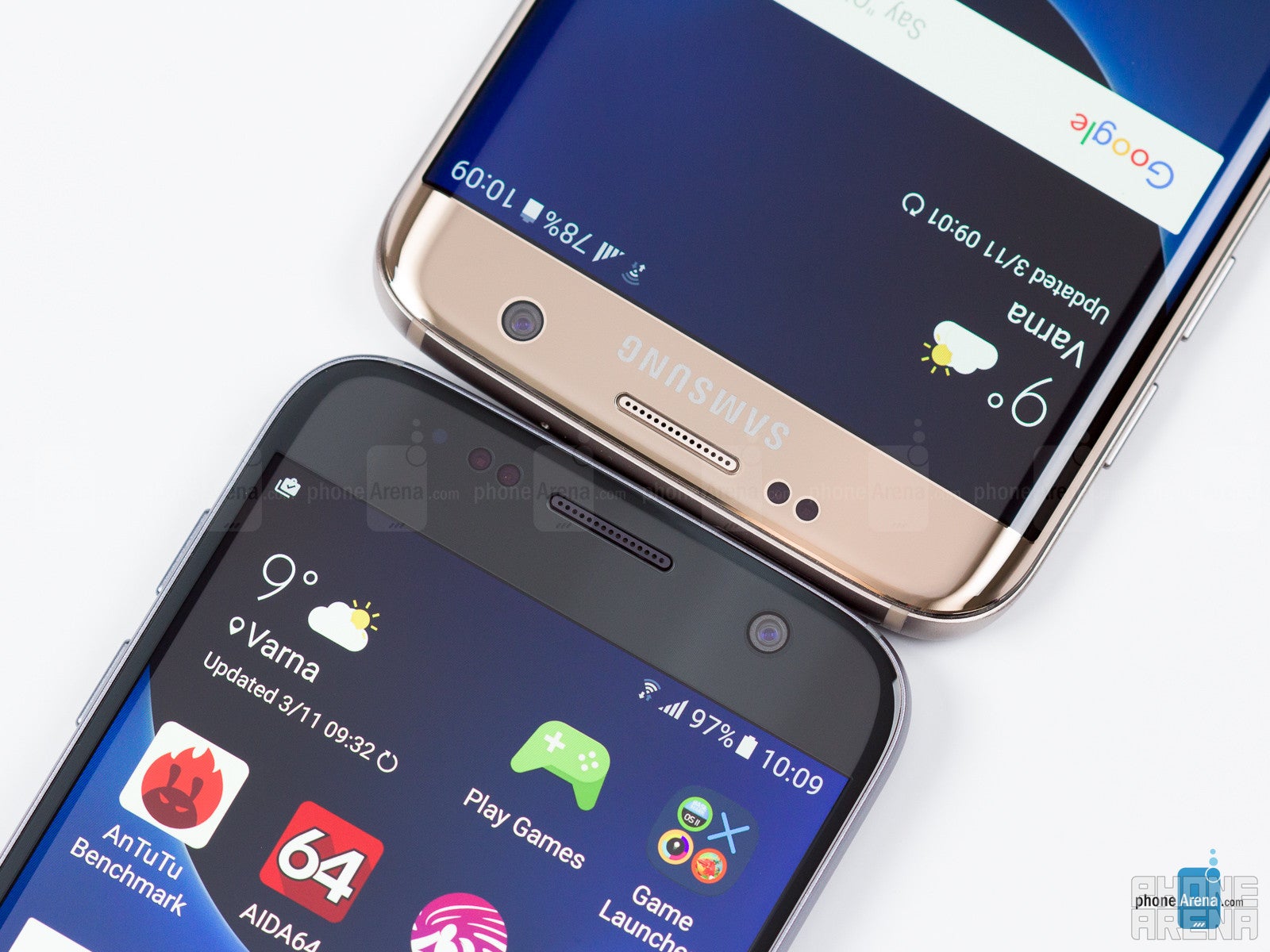
Speakerphone quality is not ideal, though, with its biggest flaw being that it is just weak and not loud enough to properly hear in louder conditions.
Battery life
The S7 Edge lasts a bit longer, but both score below average on our battery test.
The tech community was all abuzz and ecstatic about rumors of a much larger than typical, 3600mAh battery cell on the Galaxy S7 Edge. The rumors turned out to be true: the Galaxy S7 Edge does indeed come with a 3600mAh battery, while the Galaxy S7 also has a bigger than most in its class, 3000mAh cell.
Quite disappointingly, though, actual battery life on the two phones is not really the revelation that many had hoped for.
We put the Galaxy S7 and Galaxy S7 Edge through our custom battery benchmark and the phones scored around the middle (and even a bit below) of the pack.
We test non-stop typical smartphone use and the Galaxy S7 scored 6 hours and 37 minutes until its battery was fully drained. The S7 edge did a bit better at 7 hours and 18 mins, so its larger battery does provide a bit of an improvement over the S7. That’s shorter battery life than those of the iPhone 6s and 6s Plus, and also shorter than what Samsung’s own Galaxy Note 5 scores.
The two phones support Quick Charging and using the stock Samsung wall charger, you’d be able to top up their batteries very fast: it takes about an hour and a half to fully recharge the Galaxy S7 and 10 minutes more to fully recharge the battery of the S7 Edge.
Conclusion
Last year, we wondered: why did Samsung even make two phones that are nearly identical?
This year, there is more of a difference between the S7 and S7 Edge: the S7 Edge is larger. But is this enough of a reason for both phones to exist? Samsung has done a commendable job squeezing the 5.5” display of the S7 Edge in a very compact body for that screen size. With the richer Edge UX functionality, slightly better battery life, and overall more modern form factor, we still feel that Samsung could have easily just released the S7 Edge and called it a day. It’s the better phone all around.
Still, at a starting price of $750, it’s a bit more expensive than the S7 and for those who really want a smaller phone, it provides an option that is equally powerful and with equally great camera. If you want the better treat, though, the S7 Edge feels like it.













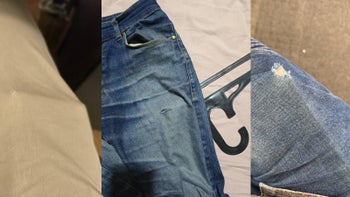
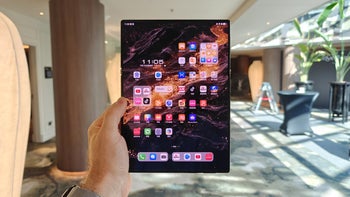

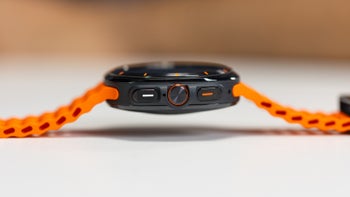

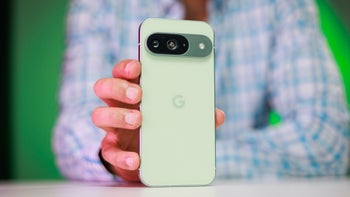

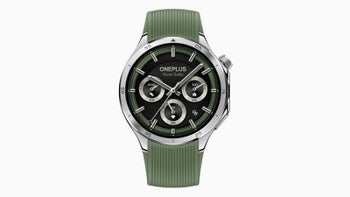

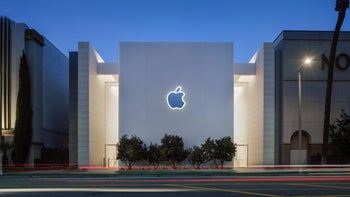






Things that are NOT allowed: